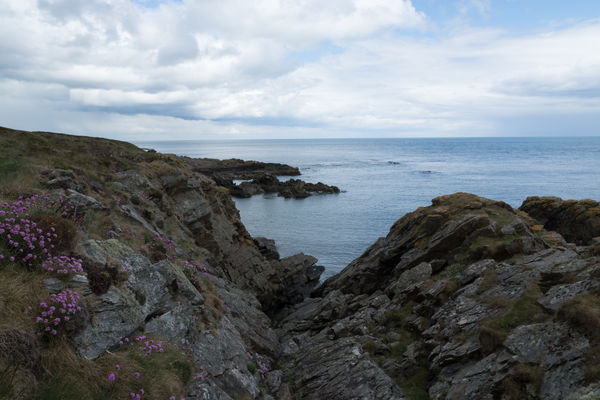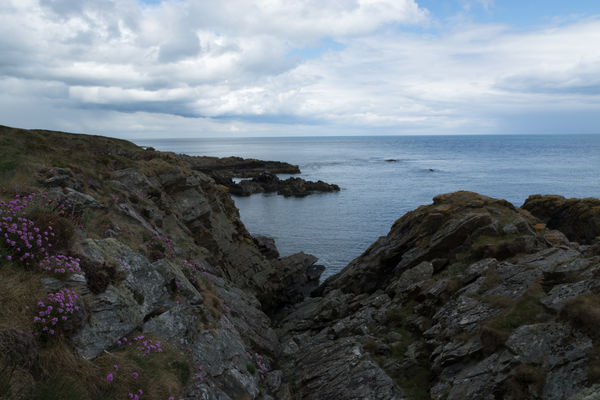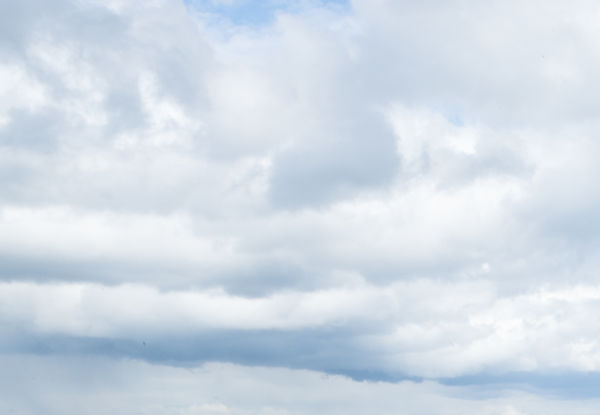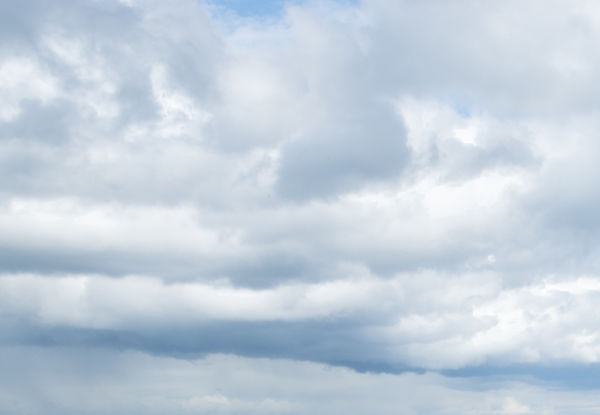Multishot merging in Lr.
Oct 28, 2020 14:50:24 #
I've just made a recent discovery. You can merge multishot exposures (all with the same exposure settings) in Lightroom. You just select them as you would with bracketed shots, right-click on them and select Photo Merge>HDR. It will then merge them and produce a large file as it does with exposure bracketed shots. And you have the same options (Auto Align, Deghosting).
I previously assumed that the HDR tool would look for shots with different exposure levels, but apparently it'll merge whatever you select. Merging multishots can be used to reduce noise if you've been forced to use a high ISO. Another technique that I haven't tried yet is shooting about 20 exposures hand-held, upsizing them, merging them and ending up with a high res version of the shot. Because they were taken hand-held there will be a certain amount of random movement between each shot and when they're merged it produces an effect like pixel-shifting (done in-camera with some cameras. The sensor shifts between exposures).
I did a multishot merge with 10 shots I took for experimenting with this technique. The results are posted below. The differences in the uncropped images aren't obvious but would become obvious during PP (especially extreme PP). It's not a particularly good example to demonstrate the reduction in noise (ISO was only 180 and the shadows aren't particularly deep), but comparing the crops is revealing. With the merged shot the colours are stronger and the details in the clouds are clearer despite the fact that the sky has an overall softer, less grainy look. Those are all characteristics I'd want in my shots when editing. And if the quick look I gave it is anything to go by, the darker areas are cleaner (less noisy) when brightened. And that's just from 10 shots.
By way of experiment I tried the merge with all 10 raw files SOOC and again with all 10 with lens corrections, and also with and without Deghosting. There were no problems with any of it. Strangely, with no deghosting I would have expected the sea to be smoother but the waves were all there undiminished.
Bear in mind that these are jpgs of the original files, so you're not seeing an exact comparison. But it's enough to see the differences.
.
I previously assumed that the HDR tool would look for shots with different exposure levels, but apparently it'll merge whatever you select. Merging multishots can be used to reduce noise if you've been forced to use a high ISO. Another technique that I haven't tried yet is shooting about 20 exposures hand-held, upsizing them, merging them and ending up with a high res version of the shot. Because they were taken hand-held there will be a certain amount of random movement between each shot and when they're merged it produces an effect like pixel-shifting (done in-camera with some cameras. The sensor shifts between exposures).
I did a multishot merge with 10 shots I took for experimenting with this technique. The results are posted below. The differences in the uncropped images aren't obvious but would become obvious during PP (especially extreme PP). It's not a particularly good example to demonstrate the reduction in noise (ISO was only 180 and the shadows aren't particularly deep), but comparing the crops is revealing. With the merged shot the colours are stronger and the details in the clouds are clearer despite the fact that the sky has an overall softer, less grainy look. Those are all characteristics I'd want in my shots when editing. And if the quick look I gave it is anything to go by, the darker areas are cleaner (less noisy) when brightened. And that's just from 10 shots.
By way of experiment I tried the merge with all 10 raw files SOOC and again with all 10 with lens corrections, and also with and without Deghosting. There were no problems with any of it. Strangely, with no deghosting I would have expected the sea to be smoother but the waves were all there undiminished.
Bear in mind that these are jpgs of the original files, so you're not seeing an exact comparison. But it's enough to see the differences.
.
Single exposure.

(Download)
Merge of multishots.

(Download)
Crop from single exposure.

(Download)
Crop from multishot file.

(Download)
Oct 28, 2020 15:42:11 #
R.G., do you see this as a better/easier way to produce a desired result than if using a single shot and editing specifically for noise, color etc? I'm not sure I understand the benefits.
Thanks!
Thanks!
Oct 28, 2020 15:57:48 #
I am interested also, Linda. I did this a few times and did not find a benefit, but I am no PP maven.
Oct 28, 2020 16:09:27 #
Linda From Maine wrote:
R.G., do you see this as a better/easier way to produce a desired result than if using a single shot and editing specifically for noise, color etc? I'm not sure I understand the benefits.
Thanks!
Thanks!
Yes, easier and you get better results. It's a better starting point, just like a merge from exposure bracketing gives a better starting point, even if you didn't need the extra dynamic range. It gives you better data to work with. So do larger sensors, so I'd expect this technique to make the files from small sensor cameras easier to work with.
Which were easier to work with - the files from your SX50 or those from your m4/3 cameras? And which gave you the better end result? There's less to fight against and there's more potential if the data's better.
Oct 28, 2020 16:39:05 #
R.G. wrote:
Yes, easier and you get better results. It's a be... (show quote)
Thanks very much!
Regarding the sx50, I owned a dslr at the same time, and after a very brief flirtation with raw in the sx50, I went back to using it exclusing in jpg for far-distant wildlife. The eagle nest I photo'd for four years filled only 1/9 of the frame at equiv. 1200 mm. Canon did a much better job with jpg than I could with raw

Oct 28, 2020 21:42:28 #
Linda From Maine wrote:
R.G., do you see this as a better/easier way to produce a desired result than if using a single shot and editing specifically for noise, color etc? I'm not sure I understand the benefits.
Thanks!
Thanks!
The benefit should come from the fact that the sensor noise is not random, but is made pseudo-random from small differences in the location on the sensor where the image is placed due to the random movement of the camera, as the OP stated. The advantage is (theoretically at least) that by making several not-quite overlapping images and putting them together through superimposition, you will reduce the noise, which is now averaged over the number of shots you took. You increase the signal-to-noise ratio every time you add an image.
I am definitely going to try this at high ISO and see how much better it makes the image. Smart thinking... not sure that denoise will improve the outcome of a multiple-shot image of course, sharpening should still work since it uses edge detection.
Oct 29, 2020 02:17:18 #
Download both of the cropped sections and jump back and forth between them. Notice how the colour is stronger and cleaner in the small blue patch at the top of the frame. Notice how the clouds are more distinct and their edges are more distinct. Notice how the whispy parts of the clouds are whispier and notice how the sky is less grainy overall. People pay large amounts of money for lenses and cameras that give them that sort of benefit.
The merge tool in Lr is easy to use and the only thing the shooter needs to worry about is holding the camera reasonably steady when they shoot the multiple exposures. And using a tripod or monopod is still a possibility.
The merge tool in Lr is easy to use and the only thing the shooter needs to worry about is holding the camera reasonably steady when they shoot the multiple exposures. And using a tripod or monopod is still a possibility.
Oct 29, 2020 07:33:46 #
Oct 29, 2020 08:58:25 #
yssirk123 wrote:
Very interesting RG - I'm going to try this out. Thanks for sharing!
You're welcome. Holding the camera very steady isn't essential but it probably helps. It may take your camera a second or two to get all of the exposures that you want. I find that holding the camera up to my face and using the viewfinder is good enough. I find something in the scene to use as a reference (preferably something in the focus lock box in the centre, but something in one of the corners would do). Then I concentrate on keeping it in the same place within the frame. That way you can keep the framing consistent for several seconds if necessary.
Oct 29, 2020 09:56:21 #
Oct 29, 2020 10:48:55 #
I see a slight improvement. In Photoshop there is a Photomerge alone and a merge to HDR Pro.
Oct 29, 2020 10:49:10 #
This is my go at an edit. This is how I remember it - not dark but not bright either. Brightening it from the original level shown above wasn't too hard. With a single exposure it would probably have needed a lot of careful handling. It was probably the bright sky that kept the exposure low.
.
.
Oct 29, 2020 11:15:04 #
Fotoartist wrote:
I see a slight improvement. In Photoshop there is a Photomerge alone and a merge to HDR Pro.
I don't have Photoshop but I believe there are more blending options. I like Lightroom's merge tool because it's simple and I'm used to using it for my bracketed shots. I can see the Deghosting function being useful for times when there has been movement in the scene.
Oct 31, 2020 04:42:43 #
R.G. wrote:
....I find that holding the camera up to my face and using the viewfinder is good enough.......
Perhaps I should have added that looking straight at a bright sun through an optical viewfinder (which is what DSLRs have) is probably not a good idea because of the risk of eye damage.
If you want to reply, then register here. Registration is free and your account is created instantly, so you can post right away.





